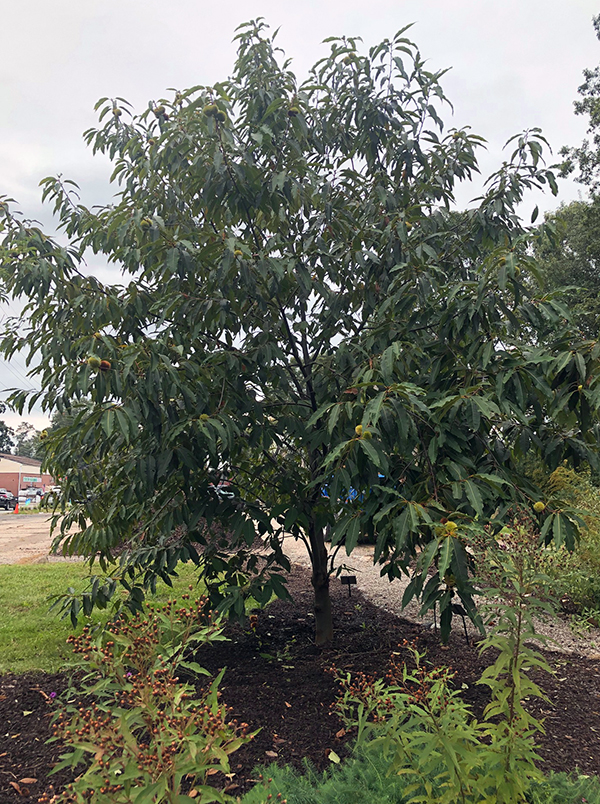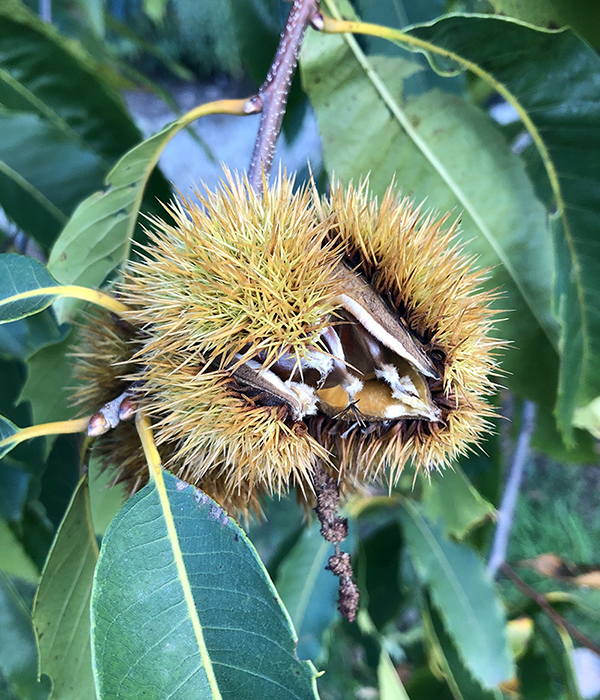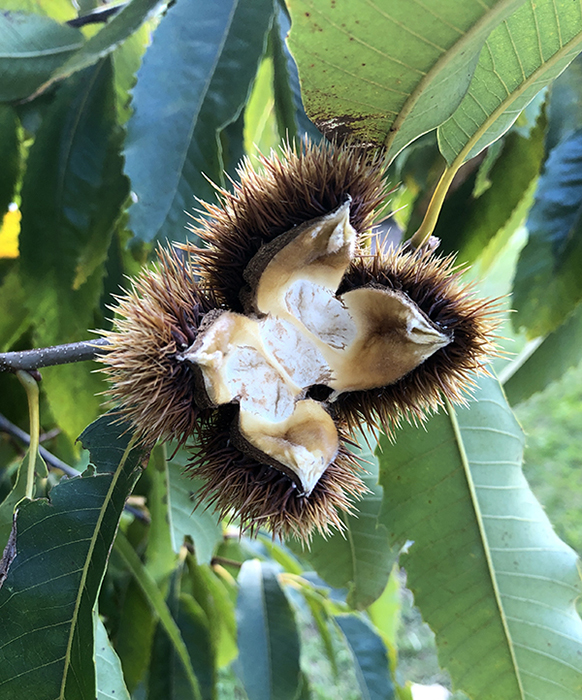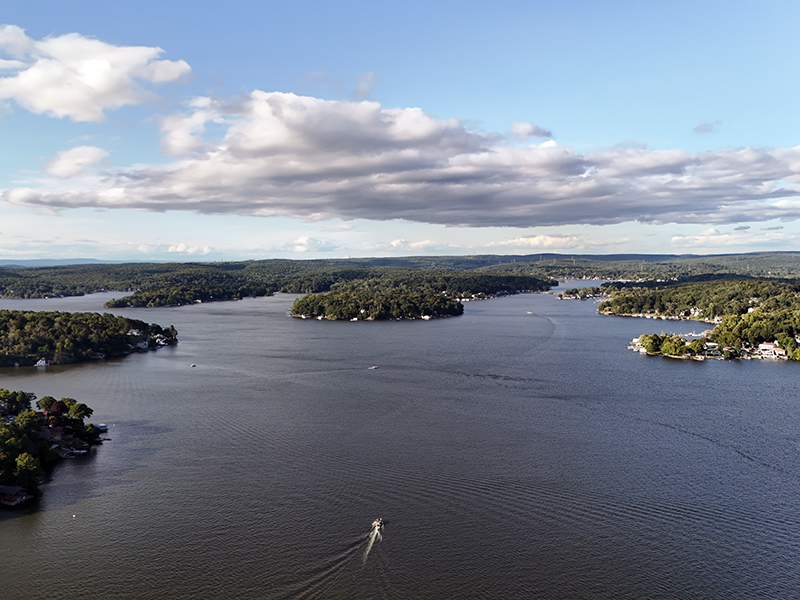
October 03, 2023| Environment, LHF Environmental & Cultural Center
By: Marty and Laurie Kane
The American chestnut tree was once an essential component of the eastern United States ecosystem, inhabiting over 200 million acres of woodland from Maine to Florida and west to the Ohio Valley. A late-flowering, reliable, and productive tree unaffected by seasonal frosts, the chestnut was the single most important food source for a wide variety of wildlife. Communities depended upon the annual nut harvest as a cash crop and to feed livestock, and chestnut lumber was a major industry. With its beautifully grained, lightweight, and rot-resistant wood, the chestnut was considered ideal for fence posts, railroad ties, barn beams and home construction, as well as fine furniture and musical instruments. The chestnut was a predominant tree at Lake Hopatcong, where hotels advertised “delightfully cool” chestnut groves.
In 1904, curators of New York’s Bronx Zoo noticed an unusual malady afflicting the zoo’s chestnut trees. Within a few years, trees in the New York Botanical Garden exhibited the same symptoms, including wilting leaves and large cankers, followed by the death of the trunk and upper limbs. Before a cause could be determined, the mysterious infection spread to chestnuts throughout New England and worked its way east, killing virtually every chestnut tree in its path. An estimated three to four billion American chestnuts are believed to have been lost, including those around Lake Hopatcong. The chestnut blight was later determined to be the result of a fungus, which was accidentally introduced to America on chestnut trees imported from Japan.
In the 1920s, government agencies and universities attempted to breed blight-resistant chestnuts by crossing Chinese and Japanese trees with the American species. Initial efforts proved unsuccessful. The American Chestnut Foundation was founded in 1983 with a mission to develop a blight-resistant American chestnut tree through scientific research and breeding and restore the tree to its native forests along the eastern United States. The ACF’s efforts have led to a tree that is 94% American chestnut with all of the characteristics of the American variety and, thus far, blight-resistant. As a native species, these trees are well suited to local climactic conditions. The young trees only need to be protected from deer and other critters that eat the bark and leaves.
As part of the restoration of the Lake Hopatcong Station in Landing, a landscape plan was developed to include the American chestnut. In the spring of 2016, the Lake Hopatcong Foundation successfully applied to receive seedlings from the American Chestnut Foundation for planting at the station. Of the five seedlings delivered that fall, four appear to be thriving and now range in height from 8’ to over 20’. We had some drama in May when one tree suddenly turned brown and lost all its leaves. Through the American Chestnut Foundation, we learned that the tree was attacked by a stem-boring beetle. Following their advice, we cut off the impacted stem and had it burned by a local landscaper. The tree quickly recovered and now has several shoots, one of which will hopefully grow into a normal chestnut tree.
In 2021, one of the trees produced our first chestnuts – perhaps the first American chestnuts at Lake Hopatcong in over a century. This year, we were thrilled to find three trees producing chestnuts. While we are not quite ready to host a chestnut roasting party, it is gratifying to see these trees once again growing at Lake Hopatcong.
 |
 |
 |

April 25, 2025
Community, Environment

April 25, 2025
Environment, Events

April 24, 2025
People